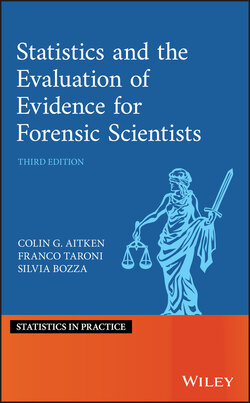Читать книгу Statistics and the Evaluation of Evidence for Forensic Scientists - Franco Taroni - Страница 35
Second Law of Probability
ОглавлениеThe second law of probability concerns the disjunction ‘ or ’ of two events. Events are called mutually exclusive when the occurrence of one excludes the occurrence of the other. For such events, the conjunction ‘ and ’ is impossible. Thus and .
If and are mutually exclusive events, the probability of their disjunction ‘ or ’ is equal to the sum of the probabilities of and . Thus, for mutually exclusive events,
(1.5)
Consider the drawing of a card from a well‐shuffled pack of cards with defined as the drawing of a spade and the drawing of a club. Then and (a card may be a spade, a club, neither but not both). Thus, the probability that the card is drawn from a black suit, or is 1/2, which equals .
Consider the earlier example, the rolling of a single six‐sided fair die. Then the events and are not mutually exclusive. In the discussion of conjunction it was noted that the event ‘ and ’ denoted the throwing of a 5, an event with probability 1/6. The general law, when and , is
This rule can be easily verified in this case where and or
Before discussing the third law of probability for the conjunction of two events, it is necessary to introduce the ideas of dependence and independence.
